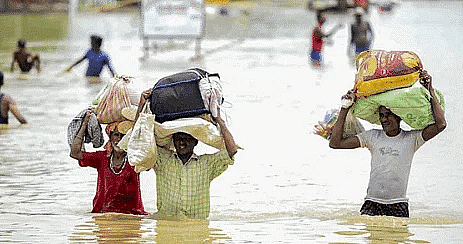A River's Tale - 2 Class 4 Worksheet EVS Chapter 13
Q1: Name the following
(i) It is a natural disaster that occurs due to heavy tidal waves.
Ans: Tsunami
(ii) It is a hydroelectric plant that generates electricity.
Ans: Dam
(iii) These animals are found in the ocean.
Ans: Marine animals
(iv) They are substances that make the water dirty.
Ans: Water contaminants
(v) It is the longest river in the world.
Ans: Amazon
Q2: Fill in the blanks
(i) _________is the deepest ocean.
Ans: Pacific Ocean
(ii) _________is a process of separating liquid from solid.
Ans: Decantation
(iii) _________ is a natural disaster caused due to heavy rain.
Ans: Flood
(iv) _________is the longest river.
Ans: Amazon
(v) The diseases caused by water are called _________ diseases.
Ans: Flood
Q3: Give two examples of each
(i) Aquatic animals
Ans: Dolphin and whale
(ii) Rivers
Ans: Ganga and Nile
(iii) Water-borne diseases
Ans: Typhoid and Diarrhoea
(iv) Aquatic plants
Ans: Lotus and mudwort
(v) Oceans
Ans: Pacific and Arctic
Q4: True and False
(i) Typhoid is an air-borne disease.
Ans: False
(ii) Cleaning near water bodies is a good activity.
Ans: False
(iii) Boiling the water makes it more dirty.
Ans: False
(iv) Filtration is a process of adding two liquids.
Ans: False
(v) Decantation is a process of separating liquid from solid.
Ans: True
Q5: Short Questions Answer
(i) What is an immiscible liquid?
Ans: An immiscible liquid is a fluid form that can not dissolve in water.
(ii) What is decantation?
Ans: Decantation is a process of separating liquid from solid and immiscible liquids.
(iii) What is potable water?
Ans: Potable water is a clean form of water that we can use for drinking.

(iv) What is filtration?
Ans: Filtration is a process of removing harmful water particles.
(v) What is flood?
Ans: A flood is a natural disaster caused due to heavy rain or an increase in the water levels of water bodies.
|
49 videos|217 docs|54 tests
|
FAQs on A River's Tale - 2 Class 4 Worksheet EVS Chapter 13
| 1. What is the importance of rivers in our ecosystem? |  |
| 2. How do rivers shape the landscape? |  |
| 3. What are the different stages of a river's journey? |  |
| 4. How do rivers contribute to human civilization? |  |
| 5. What are the major threats to rivers and their ecosystems? |  |
















